

House Extensions ~ Roofing ~ Paving
T: 07885 722655
E: info@angleseycontractors.co.uk

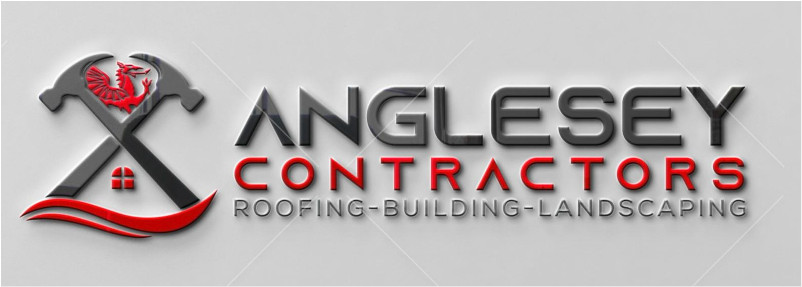
ROOFING
Anglesey Contractors are experienced in all types of roof repair and replacement: slate and tile roofs; felt and rubber flat roofs, including chimney, facias and gutter repairs and replacements.
2025 PORTFOLIO
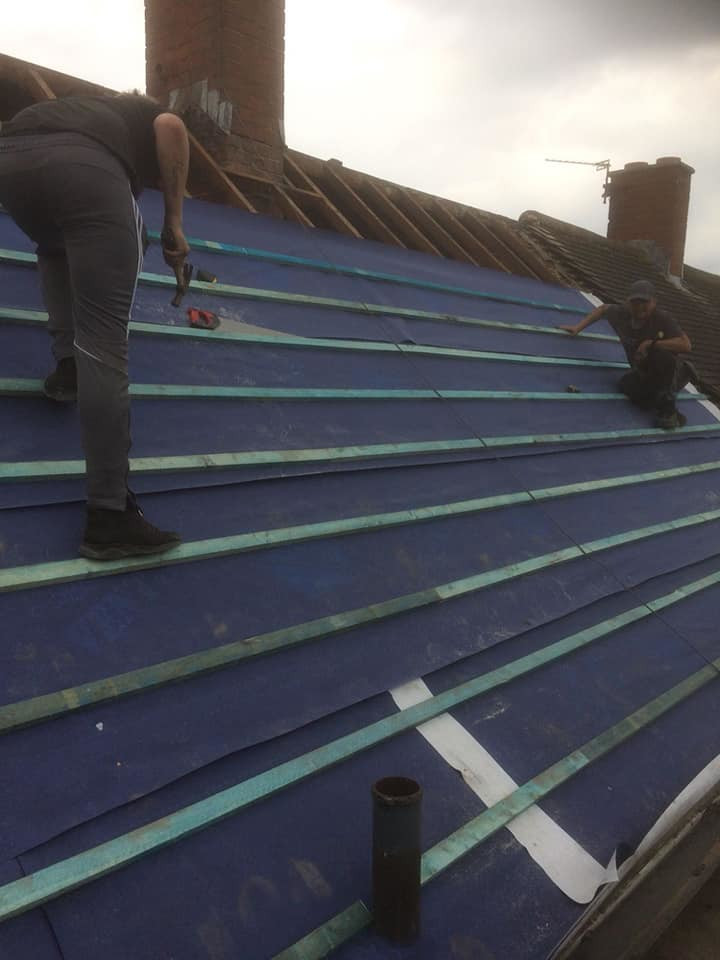
Pitched roof replacement
Replacing an old tile roof. The UK has the oldest housing stock in the world. If nothing else that proves it was well built.
Even so, after 80 years or so even a sturdy old roof will need replacing because the tiles begin to crack or delaminate. Removal and disposal of the old tiles provides an opportunity to inspect the rafters for rot or sagging. Assuming the structural timbers are still sound a new vapour permeable sarking membrane is first fixed to the rafters. Older roofs will have had pitch coated sarking felt or maybe just lime mortar 'parged' to the underside of the slates or tiles.
Treated timber battens are then fixed over the sarking membrane. The idea is to provide a rain-shedding roof that allows internal moisture vapour from the house to escape.
If new tiles are to be fitted in place of old slates it should be noted that tiles are heavier than slates. Therefore an assessment must be made of existing timbers. Are they in good enough condition to carry the extra weight.
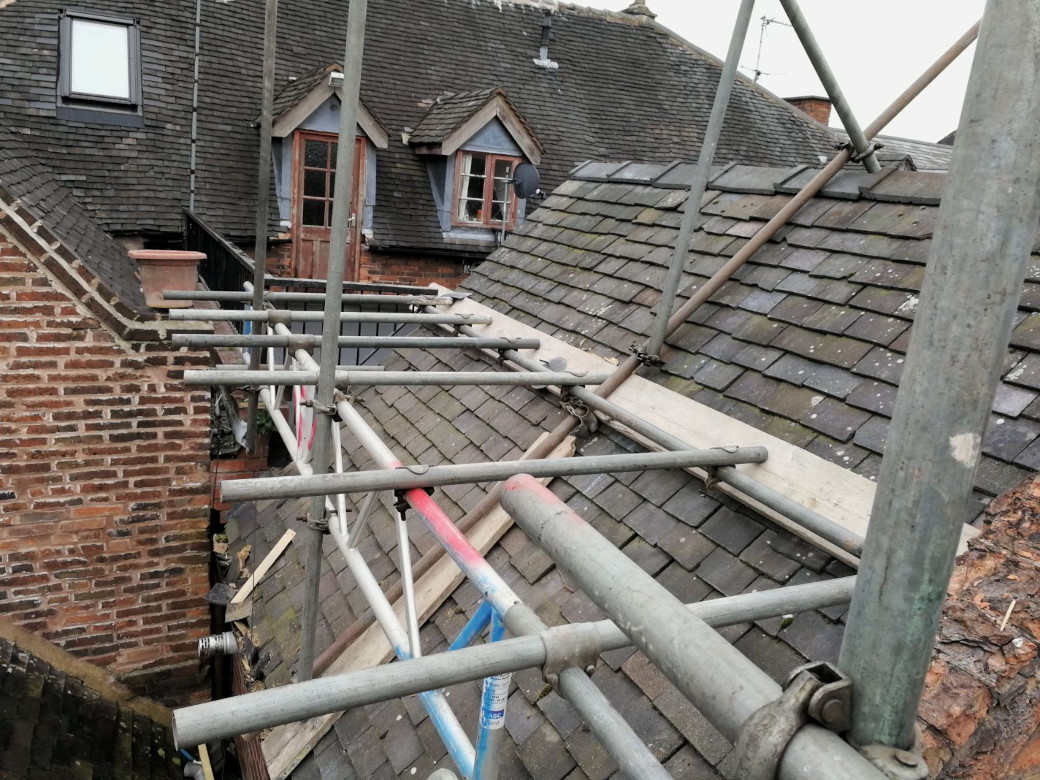
Selective roof repairs
Making repairs to an old slate roof on a house near Gwalchmai.
A difficult corner to erect scaffolding due to extensions and new buildings adjacent to the property.
Numerous slipped slate need to be re-aligned and missing slates to be replaced. The heavy coping stones at the edge of the roof have carefully been removed so that old perished mortar can be removed and the copings then bedded in new mortar.
Inside the attic new mineral wool thermal insulation will be installed.
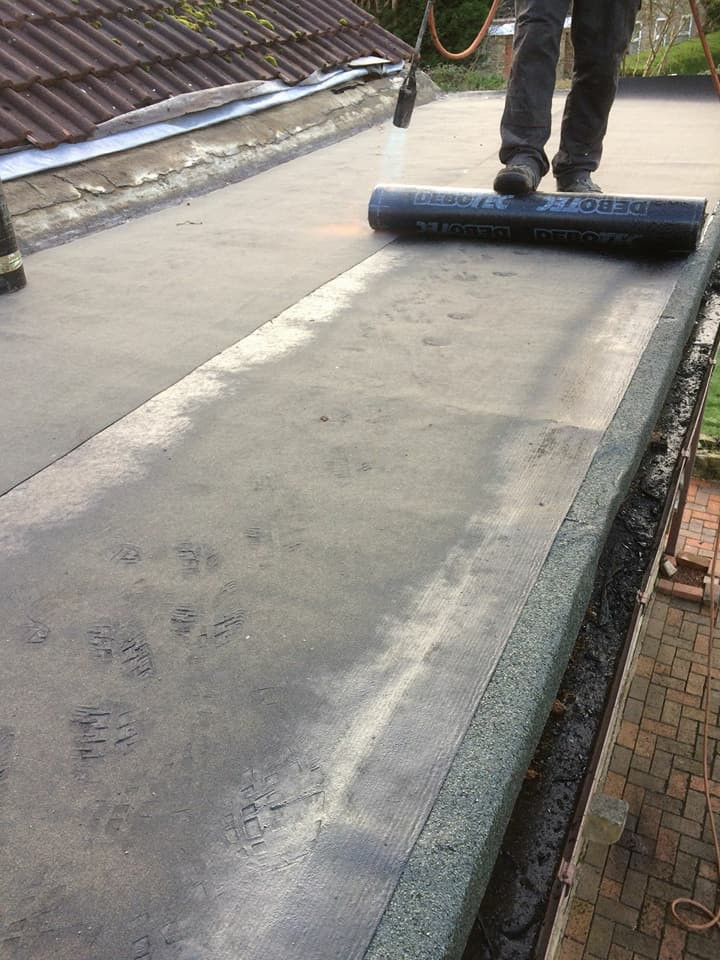
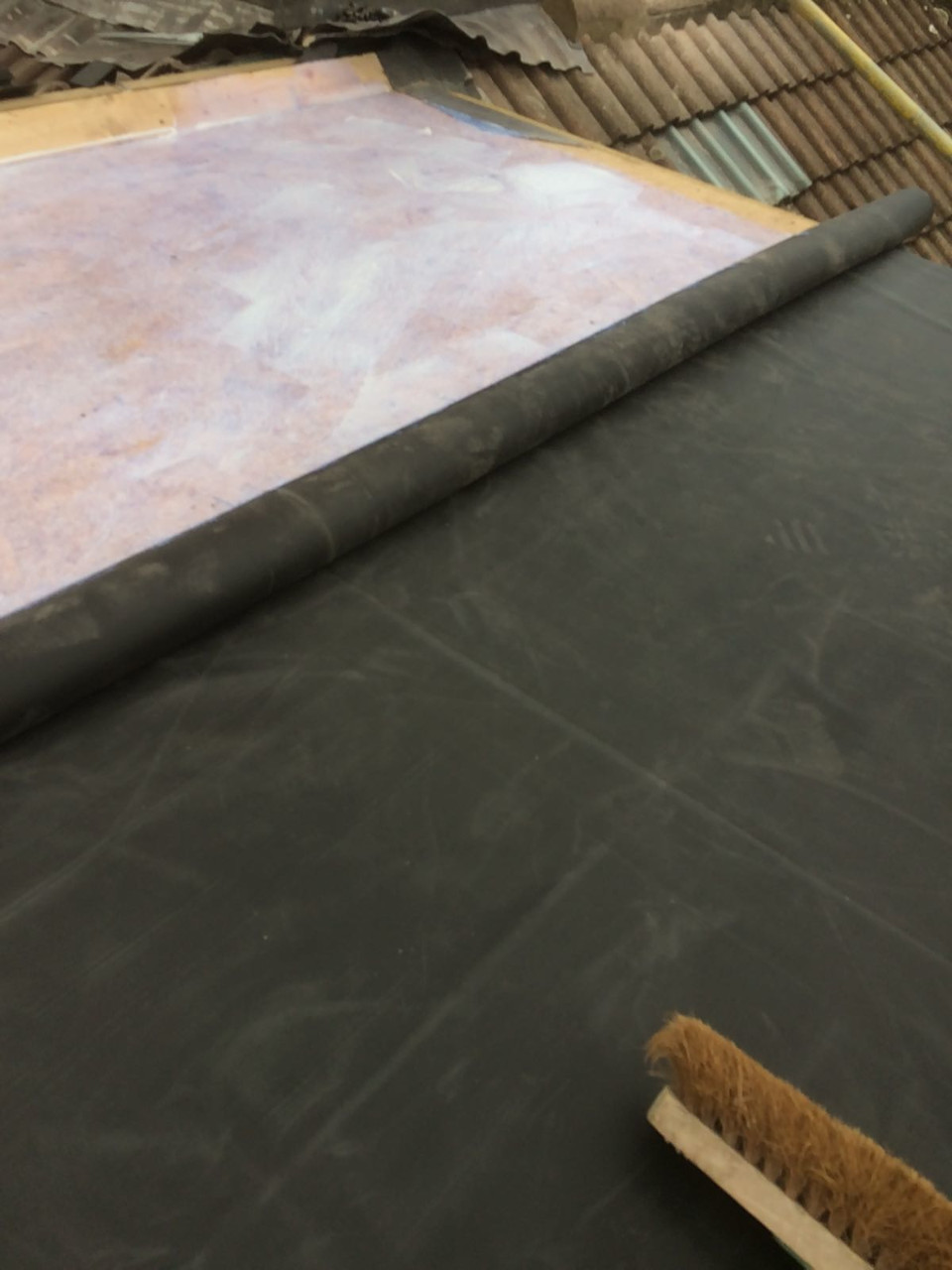
Flat roof repairs
Flat roofs cost less to install but they do have a shorter life than slate or tile pitched roofs.
A properly constructed flat roof should have a service life of up to 40 years. There are three main types of flat roof coverings: EPDM rubber, 3-ply or 2-ply felt and GRP (glass reinforced polyester). Each system has its own installation requirements and specific benefits.
EPDM is now the most widely used surfacing materials because it can be laid in a single sheet and therefore costs less to install than the alternatives. GRP is the most expensive and is usually reserved for roofs with many upstands or steps, or where the roof is likely to be subject to significant foot traffic.
The above pictures show torch on 3-ply felt and EPDM rubber single sheet being applied to flat roofs.


